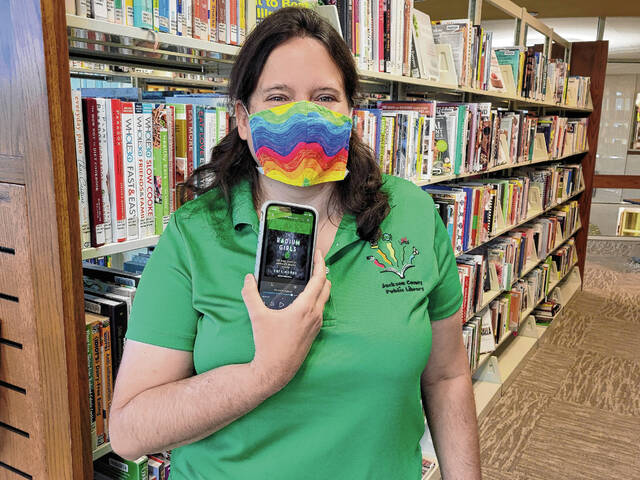
Monica Riley holds her cellphone with the audiobook version of “The Radium Girls: The Dark Story of America’s Shining Women” by Kate Moore and read by Angela Brazil.
Submitted photo
Name: Monica Riley
Job title: Head of collection development for the Jackson County Public Library
What’s the name of the book and author you are recommending?
“The Radium Girls: The Dark Story of America’s Shining Women” by Kate Moore and read by Angela Brazil
What made you want to pick up this book in the first place?
Moore had a book come out earlier this year that I thought was pretty popular, and I thought “The Radium Girls” had been pretty popular in the past, too. I was looking for a nonfiction book, so I tried this one.
Once you got into the book, what made you want to keep reading it?
I wanted to know when and how it was discovered what was happening to the women. I also was interested to know whether the women’s employers got their comeuppance for their dishonesty and their treatment of the women.
Once you finished the book, what did you like about it?
I liked that the book was written chronologically, even though that meant the author had to switch back and forth between people and places. There also was a bombshell or two I really enjoyed. As I listened to the book, I thought it would make a good movie. I could even already see scenes in my mind.
What is the book about?
Beginning during or before World War I, a few businesses in the United States were using a paint that contained radium to paint watch dials so they would glow. This painting was done by hand, mainly by teenage girls and young women. After a time, many of these women started to have health problems due to radium poisoning. The book describes the women’s deteriorating health over the years as well as doctors, dentists and others’ attempts to learn the cause of the health problems. After it was eventually determined the radium was to blame, several of the affected women tried to obtain compensation from their employers, but between denial of responsibility and greed, this proved difficult. The women, therefore, took legal actions against their former employers. While many lawyers weren’t willing to take the women’s case, a few talented and dedicated ones did. The women and the lawyers were determined to make the employers take responsibility for their actions.
Why would you recommend this book to others?
Even though it’s nonfiction, it is written as a story, so it might still appeal to fiction readers. After finishing it, readers would be more enlightened about the history of worker protections and would hopefully have an appreciation for these women and the professionals who helped them.
